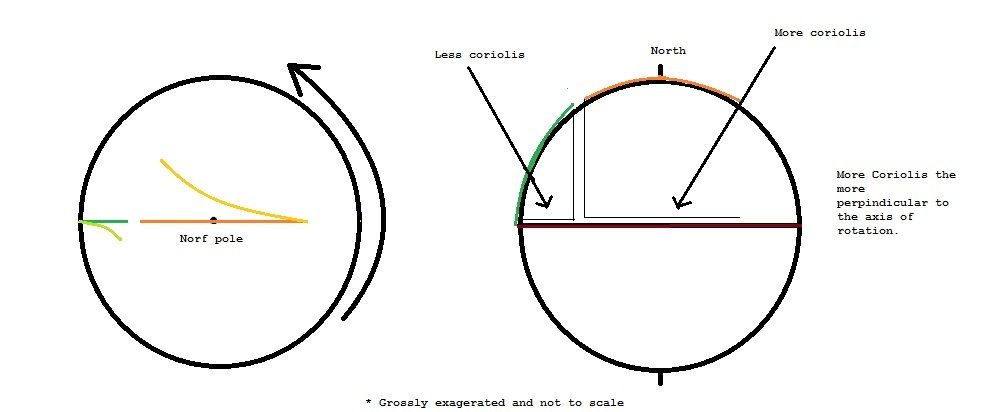Hi All,
I've been playing with Lapua's Quicktarget Unlimited ballistic software and, running some theoretical shots through it to see how it handles certain effects (spin drift, coriolis, eotwos, etc), I'm getting some numbers I just can't figure out.
Essentially I am having it plot 4 1000m shots in 4 different directions (0, 90, 180, 270 compass degrees) which seems to show eastward shots showing less drop and westward shots showing more, which is in line with the eotwos effect. So far, great.
What I can't figure out is that the more south I go (shooting position), the less windage correction (Spin drift compensation) I need to put in. For example I need to dial in about 2.5clicks (0.1mil) at 50deg latitude, 2clicks at the equator (or with coriolis effects switched off), and 1.5clicks at -50deg lat. And these windage adjustments are identical no matter whether the shot is shot at 0, 90, 180, or 270 degrees (compass) which makes no sense to me. Any effect should change depending on the direction, and any change related to latitude should be reflected on the other side of the equator, yet this doesn't. Am I missing something or is the software's math off?
Thanks!
I've been playing with Lapua's Quicktarget Unlimited ballistic software and, running some theoretical shots through it to see how it handles certain effects (spin drift, coriolis, eotwos, etc), I'm getting some numbers I just can't figure out.
Essentially I am having it plot 4 1000m shots in 4 different directions (0, 90, 180, 270 compass degrees) which seems to show eastward shots showing less drop and westward shots showing more, which is in line with the eotwos effect. So far, great.
What I can't figure out is that the more south I go (shooting position), the less windage correction (Spin drift compensation) I need to put in. For example I need to dial in about 2.5clicks (0.1mil) at 50deg latitude, 2clicks at the equator (or with coriolis effects switched off), and 1.5clicks at -50deg lat. And these windage adjustments are identical no matter whether the shot is shot at 0, 90, 180, or 270 degrees (compass) which makes no sense to me. Any effect should change depending on the direction, and any change related to latitude should be reflected on the other side of the equator, yet this doesn't. Am I missing something or is the software's math off?
Thanks!



